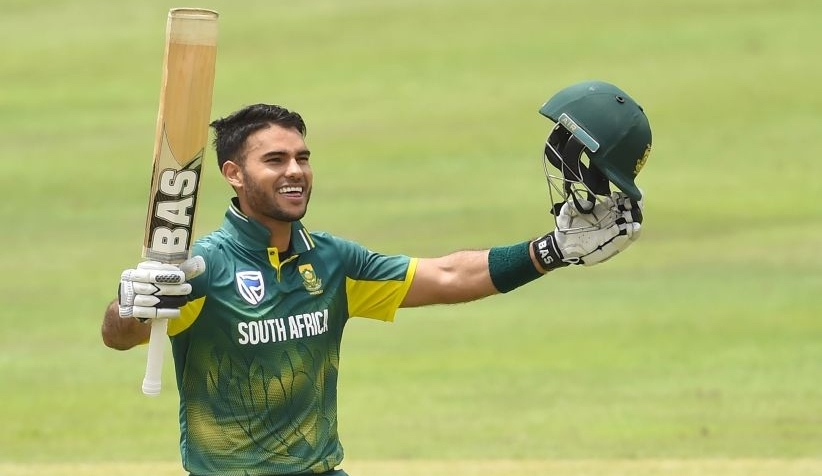The year’s not yet done, but already Indian batters have struck 15 ODI centuries, with England hot on their heels on 13, while the Proteas have only cobbled together two, writes SIMON LEWIS.
Such statistics can (of course) be somewhat misleading, as many batters don’t get a good chance to put a substantial innings together in an ODI. Mind you, the top three or four batters always have the chance to score a ton when their side bats first, so it does boil down to application, desire and valuing your wicket. Some ODI opposition are also a lot weaker than others, while a lot of ODI cricket is played on pitches that are so flat they should have speed cops and highway rest stops alongside them. And some teams (and players) have played a lot more ODIs than others.
While these stats certainly are not a final analysis of a team’s potential (or even its performances), they do make interesting reading nonetheless. Here are SACricketmag.com’s key takeaways – we’d love to hear from you if you spot an interesting trend or have some analysis you’d like to share based on these figures.
Kohli is a master
Six centuries and three 50s in 14 innings is simply sensational, and it shows how Virat Kohli values his wicket. What a year.
Sharma’s not too shabby
Rohit Sharma has 21 career ODI tons under his belt, five of which have come this year. He’s played five games more than Kohli in scoring those five (along with three 50s), but still – what a conversion rate!
India and England rock ODI cricket
The combined centuries by Indian and England players to date in 2018 is 28, with those players having also totalled 26 half-centuries. It shows their consistency but also shows their powerful conversion rates. To convert half of your 50s into centuries (in the pressure and pace of ODI cricket) shows your mental strength and focus, the value you place on your wicket, as well as your ability to build an innings through the 50 overs available to you in an ODI. No easy task, but essential to success in white-ball cricket.
High conversion rates
Let’s be fair, among the centurions, it looks like players tend towards scoring a century when they get past 50. Does that suggest they are cashing in against weaker opposition? Does it mean that once you are well set at the wicket in an ODI that you are harder to dismiss?
Hard to tell either way, but it’s interesting to see how high that conversion rate is – it’s much higher than in Test cricket.
Strugglers score big
West Indies, Ireland, Scotland and Zimbabwe batters have done surprisingly well in terms of getting to triple figures in 2018. Possibly against weaker opposition in many cases, but that aside, it does show an individual mental strength that is key for success in white-ball cricket.
We miss Smith and Warner (and by ‘we’, I mean Australia)
Australia’s struggles are highlighted by their position low down the list, although they have scored five centuries to just a single half-century (that excludes half-centuries scored by players who haven’t scored centuries!). Those five centuries were all scored against England, arguably the leading ODI side at the moment, although they were mostly in high-scoring matches.
Proteas in peril
The Proteas’ struggles with the bat are highlighted by their position right at the bottom of this list, just above the lone ranger from Papua New Guinea, Tony Ura. To be fair, the Proteas have had a very short ODI schedule, so that has skewed their figures massively. They have also been without AB de Villiers, with Hashim Amla off injured and resting at times, which had really ripped the guts out of their batting lineup.
Their current batting lineup is also very inexperienced (albeit potent), with Markram (15 ODIs), Dwaine Pretorius (13), Heinrich Klaasen (12) and Reeza Hendricks (9) all being new to the ODI stage. The good news is that there is so much potential there, while Faf du Plessis, David Miller, Amla and Quinton de Kock are all mighty white-ball warriors.
However, these figures do highlight the importance of converting half-centuries into centuries and building big innings. When the Proteas get that right, then the combination of their batters and bowlers will make them a firm favourite to lift the World Cup in 2019.
| Mat | Runs | HS | Ave | SR | 100 | 50 | |
| V Kohli (INDIA) | 14 | 1202 | 160* | 133.55 | 102.55 | 6 | 3 |
| RG Sharma (INDIA) | 19 | 1030 | 162 | 73.57 | 100.09 | 5 | 3 |
| S Dhawan (INDIA) | 19 | 897 | 127 | 49.83 | 102.28 | 3 | 2 |
| AT Rayudu (INDIA) | 11 | 392 | 100 | 56.00 | 90.74 | 1 | 3 |
| 15 | 11 | ||||||
| JM Bairstow (ENG) | 22 | 1025 | 139 | 46.59 | 118.22 | 4 | 2 |
| JJ Roy (ENG) | 22 | 894 | 180 | 40.63 | 105.05 | 3 | 1 |
| JE Root (ENG) | 24 | 946 | 113* | 59.12 | 83.93 | 3 | 5 |
| JC Buttler (ENG) | 23 | 671 | 110* | 51.61 | 113.53 | 2 | 4 |
| AD Hales (ENG) | 14 | 457 | 147 | 35.15 | 91.76 | 1 | 3 |
| 13 | 15 | ||||||
| Imrul Kayes (BDESH) | 6 | 432 | 144 | 86.40 | 91.13 | 2 | 2 |
| Tamim Iqbal (BDESH) | 9 | 541 | 130* | 90.16 | 76.73 | 2 | 4 |
| Soumya Sarkar (BDESH) | 3 | 150 | 117 | 50.00 | 105.63 | 1 | 0 |
| Liton Das (BDESH) | 9 | 268 | 121 | 29.77 | 88.74 | 1 | 1 |
| Mushfiqur Rahim (BDESH) | 16 | 637 | 144 | 49.00 | 82.61 | 1 | 3 |
| 7 | 10 | ||||||
| Imam-ul-Haq (PAK) | 13 | 672 | 128 | 61.09 | 83.06 | 3 | 3 |
| Fakhar Zaman (PAK) | 16 | 810 | 210* | 67.50 | 97.59 | 2 | 5 |
| Babar Azam (PAK) | 17 | 417 | 106* | 32.07 | 79.12 | 1 | 1 |
| 6 | 9 | ||||||
| A Balbirnie (IRE) | 13 | 489 | 105 | 37.61 | 71.80 | 2 | 3 |
| WTS Porterfield (IRE) | 13 | 450 | 139 | 34.61 | 76.66 | 2 | 1 |
| EC Joyce (IRE) | 6 | 273 | 116* | 68.25 | 76.04 | 1 | 2 |
| PR Stirling (IRE) | 13 | 450 | 126 | 34.61 | 80.93 | 1 | 2 |
| 6 | 8 | ||||||
| SO Hetmyer (WI) | 15 | 707 | 127 | 47.13 | 111.51 | 3 | 2 |
| CH Gayle (WI) | 9 | 307 | 123 | 34.11 | 94.75 | 1 | 1 |
| R Powell (WI) | 14 | 357 | 101 | 32.45 | 81.32 | 1 | 1 |
| SD Hope (WI) | 15 | 578 | 123* | 48.16 | 68.89 | 1 | 3 |
| 6 | 7 | ||||||
| LRPL Taylor (NZ) | 10 | 639 | 181* | 91.28 | 88.87 | 2 | 4 |
| KS Williamson (NZ) | 11 | 468 | 115 | 46.80 | 75.97 | 2 | 1 |
| MJ Guptill (NZ) | 10 | 423 | 100 | 47.00 | 73.18 | 1 | 2 |
| 5 | 7 | ||||||
| AJ Finch (AUS) | 10 | 482 | 107 | 48.20 | 89.92 | 3 | 1 |
| SE Marsh (AUS) | 6 | 310 | 131 | 51.66 | 101.30 | 2 | 0 |
| 5 | 1 | ||||||
| MH Cross (SCOT) | 11 | 387 | 114 | 38.70 | 86.19 | 2 | 0 |
| CS MacLeod (SCOT) | 11 | 534 | 157* | 59.33 | 99.81 | 2 | 2 |
| 4 | 2 | ||||||
| Mohammad Shahzad (AFG) | 18 | 607 | 124 | 35.70 | 81.47 | 1 | 4 |
| Rahmat Shah (AFG) | 20 | 722 | 114 | 38.00 | 74.74 | 1 | 6 |
| 2 | 10 | ||||||
| BRM Taylor (ZIM) | 21 | 898 | 138 | 42.76 | 87.60 | 2 | 4 |
| SC Williams (ZIM) | 11 | 448 | 129* | 49.77 | 85.00 | 1 | 3 |
| 3 | 7 | ||||||
| Rameez Shahzad (UAE) | 8 | 472 | 121* | 78.66 | 87.08 | 2 | 3 |
| F du Plessis (SA) | 7 | 309 | 120 | 51.50 | 91.69 | 1 | 0 |
| RR Hendricks (SA) | 8 | 236 | 102 | 29.50 | 82.80 | 1 | 1 |
| 2 | 1 | ||||||
| TP Ura (PNG) | 3 | 237 | 151 | 79.00 | 96.34 | 1 | 0 |
Stats prior to the third ODI between South African and Australia in Hobart.
Photo: Getty Images







